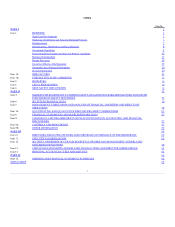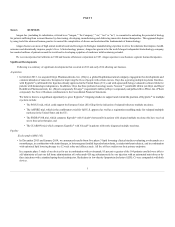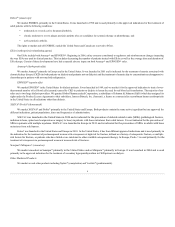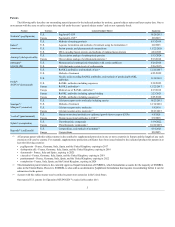Amgen 2013 Annual Report Download - page 15
Download and view the complete annual report
Please find page 15 of the 2013 Amgen annual report below. You can navigate through the pages in the report by either clicking on the pages listed below, or by using the keyword search tool below to find specific information within the annual report.
relationship management and evaluation of alternative sources when feasible. We also monitor the financial condition of certain suppliers and their ability to
supply our needs. See Item 1A. Risk Factors — We rely on third-party suppliers for certain of our raw materials, medical devices and components.
We perform various procedures to assist in authenticating the source of raw materials, including intermediary materials used in the manufacture of our
products, which include verification of the country of origin. These procedures are incorporated into the manufacturing processes we and our third-party
contract manufacturers perform.
Regulation by government authorities in the United States and other countries is a significant factor in the production and marketing of our products and
our ongoing research and development (R&D) activities. In order to clinically test, manufacture and market products for therapeutic use, we must satisfy
mandatory procedures and safety and effectiveness standards established by various regulatory bodies.
Regulation in the United States
In the United States, the Public Health Service Act, the Food, Drug, and Cosmetic Act (FDCA) and the regulations promulgated thereunder, as well as
other federal and state statutes and regulations govern, among other things, the production, research, development, testing, manufacture, quality control,
labeling, storage, record keeping, approval, advertising and promotion, and distribution of our products. Failure to comply with applicable regulatory
requirements may subject us to administrative and/or judicially imposed sanctions. The sanctions could include the FDA’s refusal to approve pending
applications, withdrawals of approvals, delay or suspension of clinical trials, warning letters, product recalls, product seizures, total or partial suspension of
our operations, injunctions, fines, civil penalties and/or criminal prosecution.
Clinical Development and Product Approval. Drug development in our industry is complex, challenging and risky; and failure rates are high. Product
development cycles are very long - approximately 10 to 15 years from discovery to market. A potential new medicine must undergo many years of preclinical
and clinical testing to establish its safety and efficacy for use in humans at appropriate dosing levels and with an acceptable benefit-risk profile.
After laboratory analysis and preclinical testing in animals, we file an Investigational New Drug Application (IND) with the FDA to begin human
testing. Typically, we undertake an FDA-designated three-phase human clinical testing program.
•In phase 1, we conduct small clinical trials to investigate the safety and proper dose ranges of our product candidates in a small number of
human subjects.
•In phase 2, we conduct clinical trials to investigate side effect profiles and the efficacy of our product candidates in a larger number of patients
who have the disease or condition under study.
•In phase 3, we conduct clinical trials to investigate the safety and efficacy of our product candidates in a large number of patients who have the
disease or condition under study.
The FDA monitors the progress of each trial conducted under an IND and may, at its discretion, re-evaluate, alter, suspend or terminate the testing based
on the data accumulated to that point and the FDA’s risk/benefit assessment with regard to the patients enrolled in the trial. The results of preclinical and
clinical trials are submitted to the FDA in the form of a Biologics License Application (BLA) for biologic products or a New Drug Application for small
molecule products. We cannot market or promote a new product until our marketing application has been approved by the FDA.
See Item 1A. Risk Factors for a discussion of the factors that could adversely impact our development of commercial products.
Post-approval Phase. After approval, we monitor adverse events reported following the use of our products through post marketing surveillance or
studies, other research approaches and risk management activities. We report such events to the appropriate regulatory agencies as required per local
regulations. We design and implement comprehensive proactive pharmacovigilance programs for all of our products to help ensure the detection, assessment
and communication of adverse events that may be associated with the use of our products. We may also be required by regulatory agencies to conduct further
clinical trials on our marketed products as a condition of their approval or to provide additional information on safety and efficacy. Failure to conduct such
required trials in a timely manner may result in substantial civil or criminal penalties. Reported adverse events or data resulting from post-approval trials may
result in additional limitations being placed on a product’s use or on reimbursement provided by payers for our products, or withdrawal of the product from
the market. The FDA has authority to mandate labeling changes to products at any point in a product’s lifecycle based on new safety information or as part of
an evolving label change to a particular class of products.
9
























